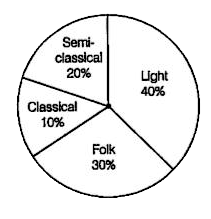Problems based on selection of certain no of people from a given no of people
Step by step video & image solution for Problems based on selection of certain no of people from a given no of people by Maths experts to help you in doubts & scoring excellent marks in Class 14 exams.
Updated on:21/07/2023Similar Questions
Knowledge Check
Which economic problem involves selection of category of people who will ultimatly consume the goods?
AHow to produceBFor whom to produceCWhat to produceDNone of these.Study the following information and answer the given questions.
A certain number of people sitting in a linear row facing north. T sits third from one of the ends. Six people sit between A and T. The number of people sitting between A and T is the same as a number of people sitting between A and H. Three people sit between A and G who sits fourth to the right of C. Nine people are sitting between C and K when counted from the left of K. Number of people sitting to the right of A is one less than the number of people sitting to the left of C. Six people sit between D and C. Only one person sits between D and J, who sits second from the end.
How many people are sitting in the given arrangement?A(a) 27B(b) 31C(c) 28D(d) 24Study the following information and answer the given questions.
A certain number of people sitting in a linear row facing north. T sits third from one of the ends. Six people sit between A and T. The number of people sitting between A and T is the same as a number of people sitting between A and H. Three people sit between A and G who sits fourth to the right of C. Nine people are sitting between C and K when counted from the left of K. Number of people sitting to the right of A is one less than the number of people sitting to the left of C. Six people sit between D and C. Only one person sits between D and J, who sits second from the end.
Number of people sitting between D and C is the same as the number of people sitting between______ .A(a) H and KB(b) K and DC(c) A and HD(d) J and C
Study the following information and answer the given questions.
A certain number of people sitting in a linear row facing north. T sits third from one of the ends. Six people sit between A and T. The number of people sitting between A and T is the same as a number of people sitting between A and H. Three people sit between A and G who sits fourth to the right of C. Nine people are sitting between C and K when counted from the left of K. Number of people sitting to the right of A is one less than the number of people sitting to the left of C. Six people sit between D and C. Only one person sits between D and J, who sits second from the end.
How many people sit between J and H?
View SolutionStudy the following information and answer the given questions.
A certain number of people sitting in a linear row facing north. T sits third from one of the ends. Six people sit between A and T. The number of people sitting between A and T is the same as a number of people sitting between A and H. Three people sit between A and G who sits fourth to the right of C. Nine people are sitting between C and K when counted from the left of K. Number of people sitting to the right of A is one less than the number of people sitting to the left of C. Six people sit between D and C. Only one person sits between D and J, who sits second from the end.
Who amongst the following sits fifth to the right of K?
View SolutionStudy the following information and answer the given questions.
A certain number of people sitting in a linear row facing north. T sits third from one of the ends. Six people sit between A and T. The number of people sitting between A and T is the same as a number of people sitting between A and H. Three people sit between A and G who sits fourth to the right of C. Nine people are sitting between C and K when counted from the left of K. Number of people sitting to the right of A is one less than the number of people sitting to the left of C. Six people sit between D and C. Only one person sits between D and J, who sits second from the end.
Who amongst the following sits between H and A?
View SolutionStudy the given information carefully and answer the questions based on it.
A survey was made to find the type of music that a certain group of young people liked in a city

If 20 people liked classical music, then how many young people were surveyed?
View SolutionThe tracking of people by trained dogs is based on the recognition of which of the following compound in the sweat from feet?
View Solution
